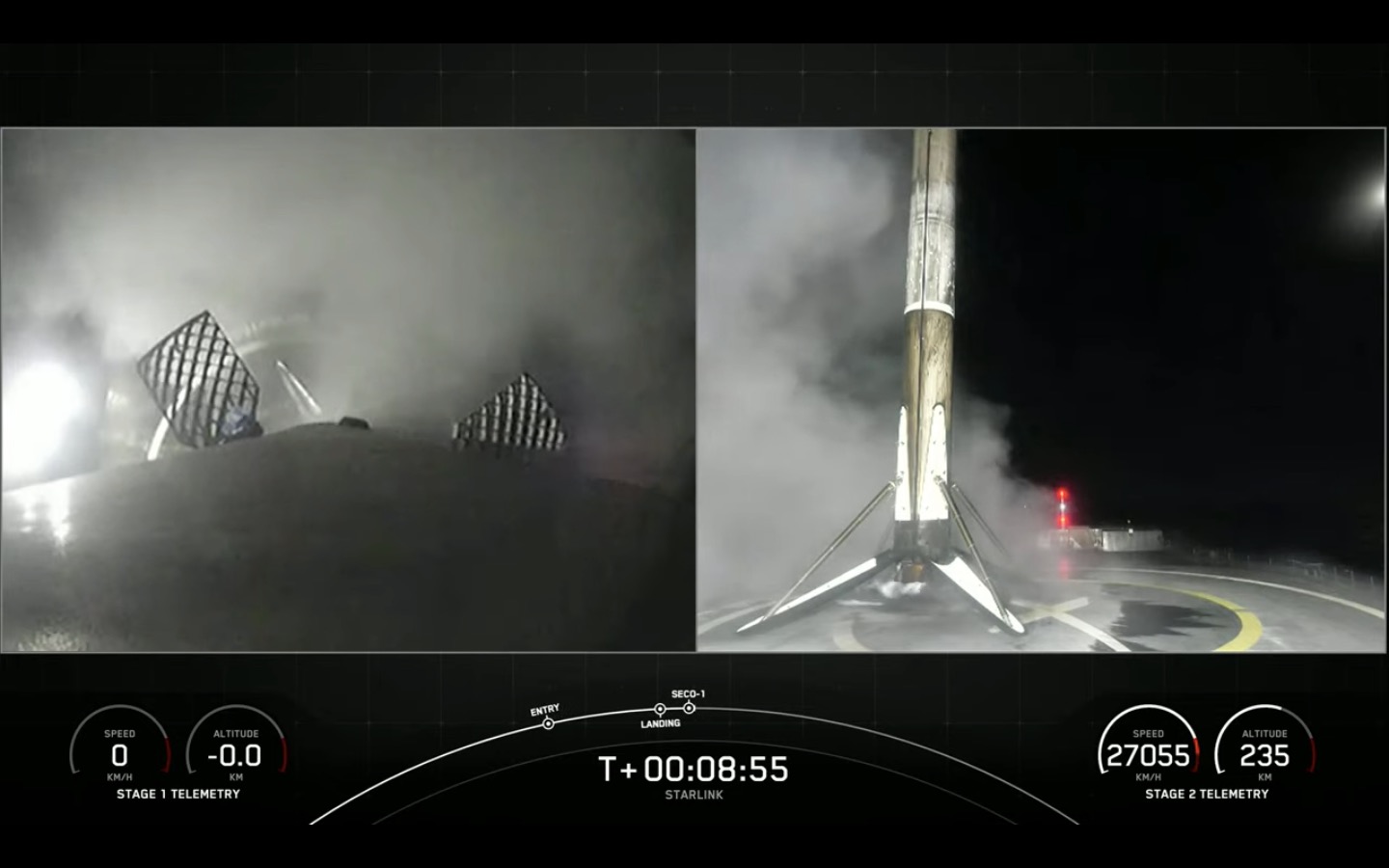SpaceX launched another big batch of its Starlink internet satellites to orbit and landed a rocket on a ship at sea on Tuesday (Aug. 9).
A two-stage Falcon 9 rocket topped with 52 Starlink spacecraft lifted off from NASA's Kennedy Space Center in Florida Tuesday at 10:14 p.m. EDT (0214 GMT on Aug. 10).
A little less than nine minutes after launch, the Falcon 9's first stage came back to Earth for a vertical landing on the SpaceX droneship A Shortfall of Gravitas, which was stationed in the Atlantic Ocean off the Florida coast.
The Falcon 9 upper stage, meanwhile, continued powering its way to low Earth orbit, eventually deploying the Starlink satellites as planned about 15 minutes after liftoff, SpaceX confirmed via Twitter.
Related: SpaceX's Starlink megaconstellation launches in photos

Starlink is SpaceX's internet megaconstellation, which beams broadband service to hundreds of thousands of people around the world. Elon Musk's company has now launched more than 3,000 Starlink satellites to orbit, but many more will likely go up; SpaceX has permission to loft 12,000 of the craft and has applied for approval to launch 30,000 more on top of that.
Tonight's launch was the company's 21st Starlink mission of 2022 and its 35th orbital flight of the year overall, adding to a SpaceX record. The company's previous mark for most orbital missions in a year was 31, set in 2021.
Get the Space.com Newsletter
Breaking space news, the latest updates on rocket launches, skywatching events and more!
Rocket reuse is a big priority for SpaceX, which views it as a breakthrough that will help make Mars colonization feasible.
The Falcon 9 first stage that flew on Tuesday already had two spaceflights under its belt, according to a SpaceX mission description. That's impressive, but it's far from the SpaceX record; three different Falcon 9 boosters have launched 13 orbital missions to date.
The Starlink launch was part of a very active day for SpaceX. Also today, the company conducted "static fire" engine tests at its South Texas facility with Booster 7 and Ship 24, prototypes of its Starship deep-space transportation system.
SpaceX is preparing Booster 7 and Ship 24 for the Starship program's first-ever orbital test flight, which the company aims to launch in the coming months.
Editor's note: This story was updated at 4:20 p.m. EDT on Aug. 9 to include the webcast information and to correct the expected time of satellite deployment (to roughly 15 minutes after liftoff, rather than an hour). It was updated again at 10:43 p.m. EDT with news of the successful launch and landing and the Booster 7 and Ship 24 static fire tests.
Mike Wall is the author of "Out There" (Grand Central Publishing, 2018; illustrated by Karl Tate), a book about the search for alien life. Follow him on Twitter @michaeldwall. Follow us on Twitter @Spacedotcom or on Facebook.
Join our Space Forums to keep talking space on the latest missions, night sky and more! And if you have a news tip, correction or comment, let us know at: community@space.com.

Michael Wall is a Senior Space Writer with Space.com and joined the team in 2010. He primarily covers exoplanets, spaceflight and military space, but has been known to dabble in the space art beat. His book about the search for alien life, "Out There," was published on Nov. 13, 2018. Before becoming a science writer, Michael worked as a herpetologist and wildlife biologist. He has a Ph.D. in evolutionary biology from the University of Sydney, Australia, a bachelor's degree from the University of Arizona, and a graduate certificate in science writing from the University of California, Santa Cruz. To find out what his latest project is, you can follow Michael on Twitter.









